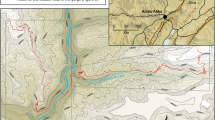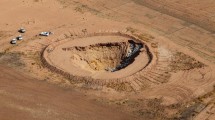Abstract
To minimize costs in conventional roadway design, as much low or valley areas as possible are utilized. In many areas of the eastern United States, these valleys are filled with carbonate rocks. Excavation is used to minimize grades—this removes protective overburden or rock cover over cavities; fill also is used to minimize grades—this can increase loads on marginally stable soil arches or rock cavity roofs. Surface water runoff is directed toward low areas—the low areas are likely zones of weakness or solutioning, thereby increasing the potential for sinkhole development and providing an opportunity for ground—water contamination, and remediation usually consists of blindly filling rock cavities, thus either channeling the still-contaminated surface flows someplace else or perhaps eliminating useful ground water recharge conduits. The authors suggest that the key to proper design, construction, and remediation for roadways planned in karst is to understand the geologic and hydrogeologic setting of the route(s) or locale, perform true geotechnical engineering design, and remediate with an understanding of the overall engineering geologic, hydrogeologic, and environmental picture.
Similar content being viewed by others
Author information
Authors and Affiliations
Rights and permissions
About this article
Cite this article
Fischer, J.A., Fischer, J.J. & Greene, R.W. Roadway design in karst. Geo 22, 321–325 (1993). https://doi.org/10.1007/BF00767504
Received:
Accepted:
Issue Date:
DOI: https://doi.org/10.1007/BF00767504




